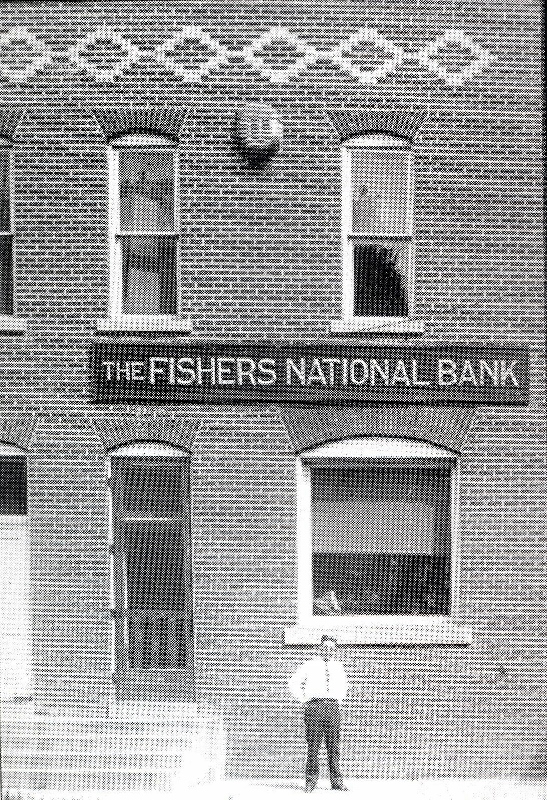By Beth Clark
At this time of year we are encouraged to shop locally for holiday gifts, which is increasingly easier to do in Fishers with the arrival of small retail businesses in the downtown area. T-shirt shop Vardagen in the heart of Fishers at 8684 E. 116th St. has been in business for just over two years printing custom designed shirts. The sturdy, white brick building that the store occupies has an early history as singular as the t-shirts sold there. It’s also a history not too far removed from the design and printing process.
“Bank locally” may not be a hip catchphrase today, but in 1913, Fishers residents were urged to bank close to home at the Fishers National Bank, which opened in July of that year in the building now utilized by Vardagen. The lot for the bank was purchased for $300 in 1912 from William “Uncle Bill” Brandom, a local character who reportedly, among his many eccentricities, always went barefoot, never dressed for winter, papered the walls of his log cabin with newspaper comics and refused to accept paper money, dealing only in gold he kept in an old iron box.
The two-story brick bank building with a fireproof vault (that Vardagen uses today as a room to showcase its skateboard designs) was erected in the fall of 1913 at a cost of $8000. Two of the town’s physicians served as the bank’s president and vice-president, Drs. S.P. Scherer and J.P. Heath, respectively.
National banks were established across the country during the Civil War as a sound way to finance a national currency system and replace worthless money issued by private banks. Local National banks deposited bonds in the U.S. Treasury, which in turn printed banknotes, also called “hometown notes” in the name of the local National bank. These notes, branded with the local bank’s name, were backed by the U.S. government and were good anywhere.
Large value hometown notes display elaborate design work with detailed historical vignettes and are sought-after collectibles. The designs until later years prominently placed the name of the local bank in the center of the note, indicating a pride of place and affirming local identity.
National Bank Notes were retired as a currency type by the U.S. government in the 1930s during the Great Depression. The Fishers National Bank was liquidated in April 1930. In the years after the bank’s closing, the building housed restaurants under a number of proprietors, including Max Eller, who owned Eller’s Lunch, and Amy Harper Herron, who operated the long-time Fishers establishment, the White Kitchen. Although each establishment was special to the town, Vardagen carries on the practice of imprinting the local name. The brand’s growing success shares Fishers with a large audience.



